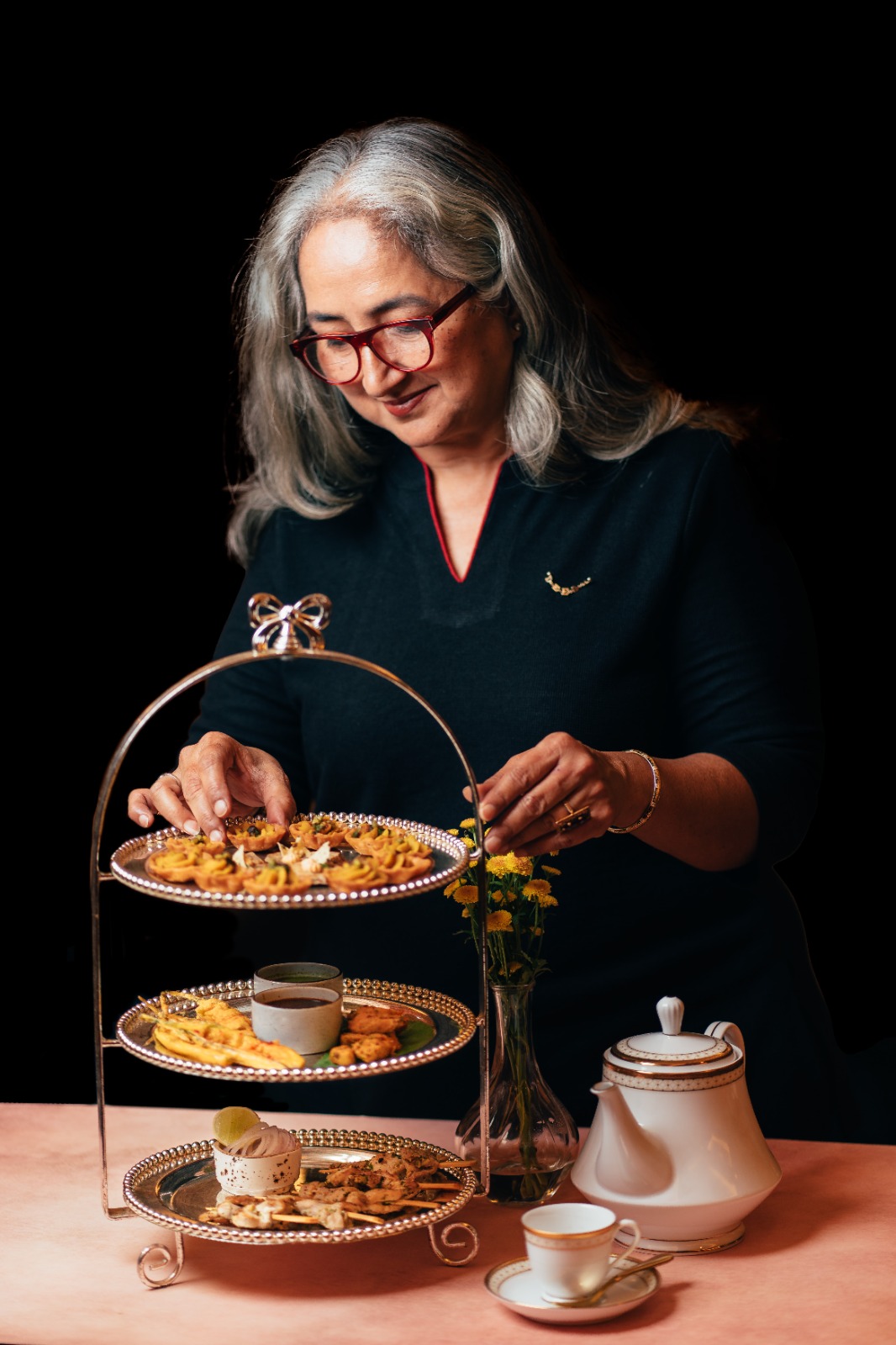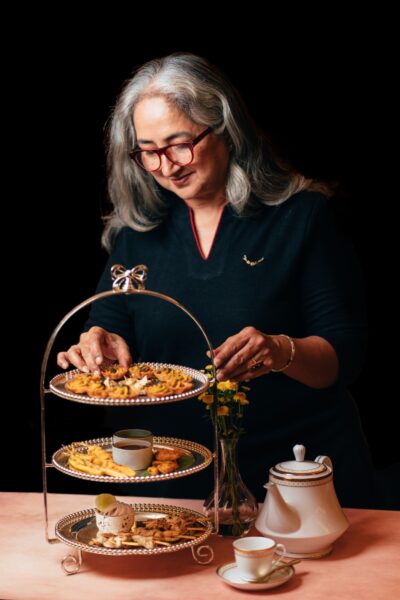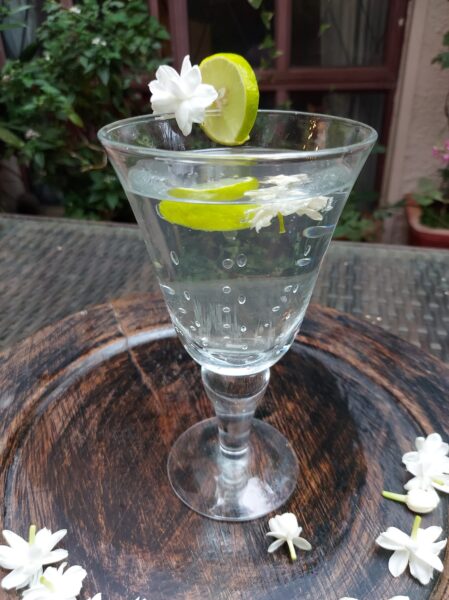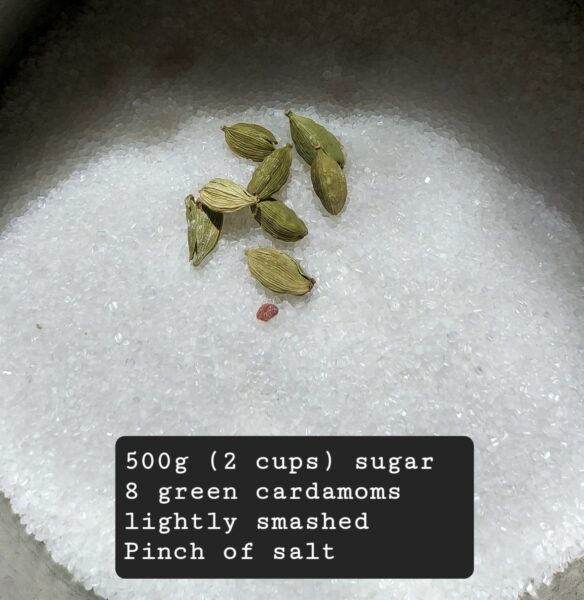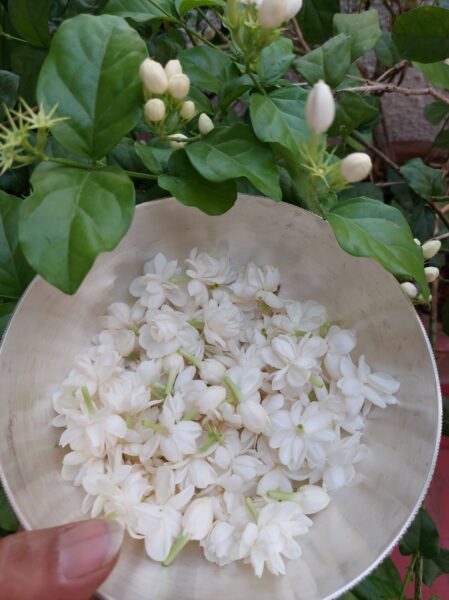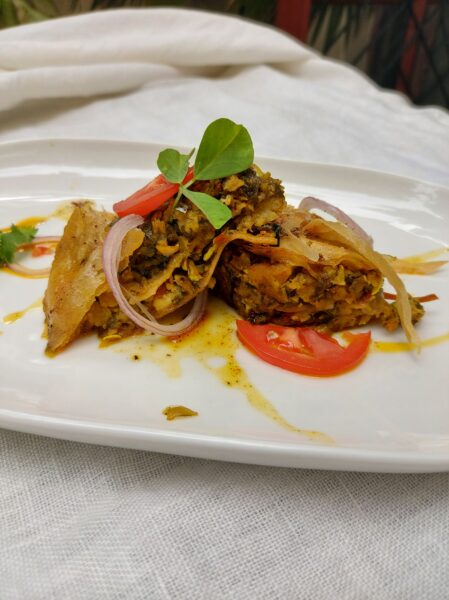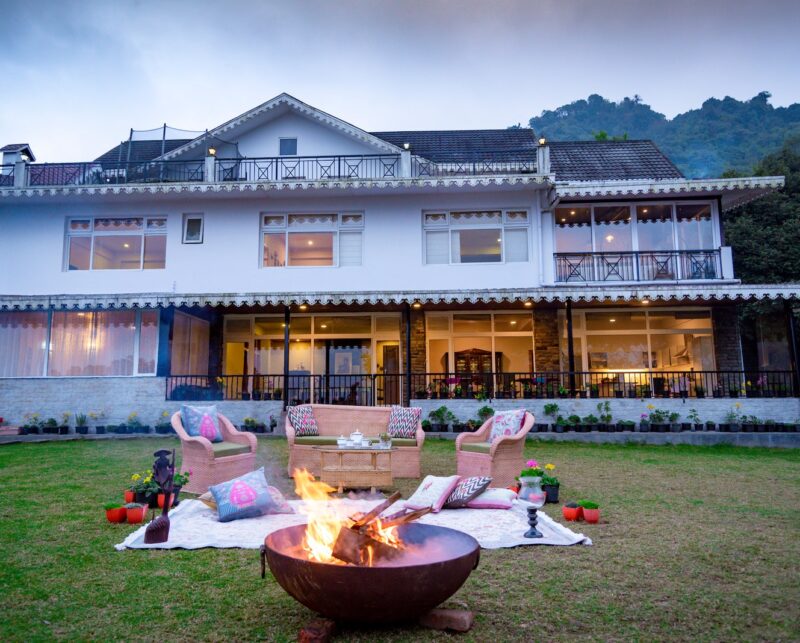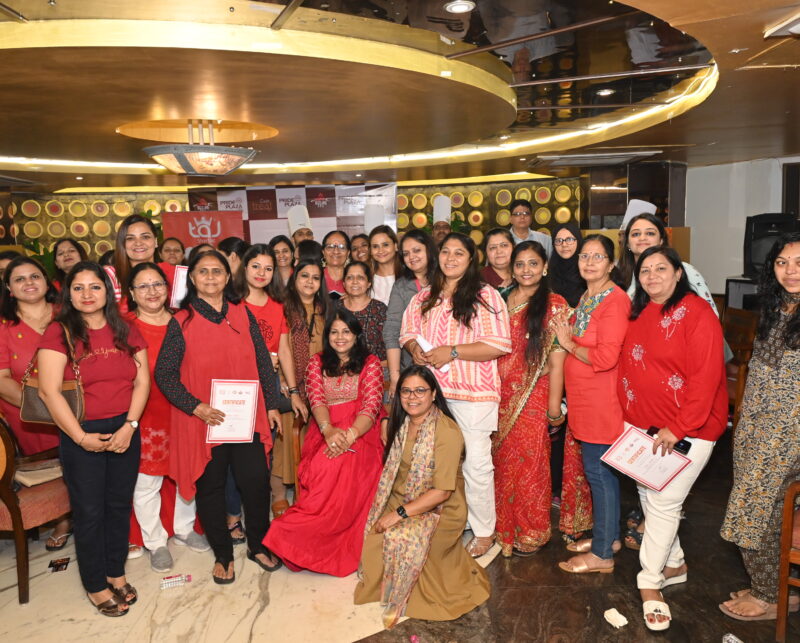DEEPA CHAUHAN: THE SINDHI MASTERCHEF
I have been cooking from a young age at home when my mother and aunt were not well. Since then, I developed a passion for cooking even hosting my own birthday parties. But, I had never thought of a cooking career till I was in my 40s. At that time, I had ordered ingredients to make Thai curry and had some surplus ingredients left in my refrigerator. The extra Thai paste was given to a close friend and neighbour who was starting a home-based catering business. She encouraged me to start making pastes and sauces commercially. My enterprise, Mortar and Pestles, was officially launched by Deepa in March 2018. The range includes ready-to-cook pastes and spices devoid of chemicals, which are mainly used for South-East Asian and Middle-East recipes.
During one of the weddings in my family, it really hurt me that the hotel could not present even one Sindhi dish at the functions. This made me realize that Sindhi cuisine needs to be promoted. I auditioned for MasterChef because I wanted to see if the judges would take an interest in Sindhi food. I was an opportunity to bring Sindhi cuisine to a national platform. It started with comfort bowl of Kadhi Chawal and went on to celebrate seasons and even wedding menus by way of the khoya, drumstick flowers and the luxury dishes of Sindhi food – the Gucchi pulao and Shaadi ji Bhaaji
Sindhi culture and cuisine is not well-known though Sindh was a cradle of culture from the Bronze Age when the Indus Valley Civilisation thrived at sites like Mohan Jo Daro. The Sindhu River is also where some of the Vedas are said to have been written. Sindh was the epicenter of many trade routes. Over 2000 years, Sindhi cuisine has taken influences from the Arabs, the Persians, neighbouring nations and states, and trade routes. The Sindhworkis went to work in distant lands setting up businesses across the world. The cuisine is therefore very diverse. It includes ingredients such as cardamom and pepper that come from southern India. We even have Pea Patata Macaroni which is a dish that has pasta cooked with potatos and peas. Agar agar or China Grass is a popular pudding in Sindhi homes as is the Caramel Custard. Sindhis use a wide variety of vegetables like lotus stem, phool batasha (makhana), mushrooms, drum sticks, yams, greens, etc in their cooking. From teevan (goat mutton) to ravas (Indian salmon fish) and pallo (Ilish), non-vegetarian dishes are also an integral part of Sindhi cuisines.
In summer, sharbats are made of mogra, chandan (sandalwood), mango, thandai, rose, khus and more, and drinks like Milk Rose blending milk with rose sharbat are very popular.
Sindhis use whole spices, dry powdered spices and unique freshly-ground masala in cooking. The Ukhri ain Muhri is a wooden mortar and pestle for making instant chutneys or macerating onions. A metal mortar-and-pestle is used for grinding garam masala and black pepper (coarsely-ground black pepper is an obsession among Sindhis) and the dando kundo – a rough textured terracotta mortar of a rough sandy texture with a long wooden pestle is used for wet ingredients.
Popups and food festivals like the one I did at Taj Lands End in March 2024, social media and shows can help bring Sindhi recipes to the limelight.
Macchi Maani
Ingredients:
For the Methi Fish
Boneless fish – 250 g (King fish or seer fish)
Onion – 100 g (finely chopped)
Tomato – 100 g (finely chopped)
Methi (fenugreek) leaves – 1 cup lightly packed – cleaned and washed. Finely chopped
Coriander leaves – ¾ cup lightly packed – cleaned and washed. Finely chopped
Garlic – 25 g – finely minced
Mustard oil – 100 mls
Turmeric – 1 teaspoon
Red Chilli powder – 2 teaspoons
Coriander powder – 1 tablespoon
Methi seeds – 1/2 teaspoon
Green Chilli – 1 medium spicy, deseeded, finely chopped and seeds reserved for finishing oil
Salt to taste
For Sindhi Maani (Roti)
Whole wheat flour – 1 cup (100g)
Groundnut oil – 2 tablespoon
Water – for kneading, about ½ cup
Makes: two portions
Method:
- Cut the fish into small 1 inch chunks, apply ¼ tsp salt, ¼ teaspoon turmeric powder and keep aside
- Knead the dough for the roti, saving some flour for dusting. Apply a few drops of groundnut oil on the surface to prevent drying and keep aside to rest.
- In a wide, shallow frying pan, heat 35 mls mustard oil to smoking point. Add the fenugreek seeds and turn off the flame. Remove the seeds once browned and reserve them for the finishing oil.
- In the same pan, fry the salt and turmeric coated fish till half done. Remove and set aside.
- Now add the garlic followed by the green chilli and onions and gently brown them. Add a pinch of salt to prevent the garlic from sticking to the pan.
- Once the onions are golden, add half the quantity of the turmeric and chilli powders and all the coriander powder; followed quickly by the finely chopped tomatoes.
- As the oils start to separate once the tomatoes are cooked, add the methi leaves, cook for 2-3 minutes followed by the coriander leaves.
- Add half a cup of water and spread the semi fried fish in the pan in a single layer, taking care that the gravy is at the same level as the top of the fish to prevent it from drying. Cover and cook for 3-4 minutes or until done.
- Divide the dough into 4 and roll the roti. Roll each ball into a 5 inch disc, apply groundnut oil and fold into a triangle (half fold followed by quarter fold). Now roll this triangle into a thin roti approximately the shape and size of the baking dish.
- Cook the rotis as usual but only till 90% done as they will be baked for 6-8 minutes.
To assemble: On a baking sheet or cookie sheet, assemble the fish and roti in the square mould as follows: Put half the cooked fish along with the gravy in a single layer and cover with one roti trimmed to fit the shape of the bowl. Repeat the layering one more time and brush the top roti with the balance groundnut oil. Bake in a preheated oven at 180 degrees (top grill only) for 6-8 minutes.
Cut the leftover trims of the roti into small bits and fry in a little oil till crisp. Reserve for garnish
For the finishing oil: Heat the balance mustard oil in a tadka pan till it reaches smoking point. Pour this over the reserved crushed methi seeds, turmeric and chilli powders, green chilli seeds, a few methi leaves and ¼ teaspoon salt. Cover immediately and allow the flavors to infuse.
Plating: Let the baked macchi maani rest for 4-5 minutes before removing the mould. Slice it into two equal rectangles. Remove part of the corner from one of the pieces to make it look like it has been eaten / tasted. Place the two pieces in the platter slightly away from each other. Drizzle the finishing oil on the top crust as well as the platter. Garnish with slivers of tomato, onion and fresh methi and coriander.
Mogra/ Rabael / Motiya gul Sharbat
Ingredients:
Mogra flowers – one large cup – unopened buds
Sugar 500 g (Sulphur free if possible)
Green Cardamom – 8 pieces, lightly smashed
Water – 1.5 cup
Salt – a pinch
Method:
- Wash the flowers in drinking water and dry them on a kitchen towel.
- In a thick-bottomed stainless-steel vessel, boil the cardamom, salt, sugar and water to make a syrup of 1- string consistency.
- Add the flowers immediately, cover and keep them aside to cool for at least 8 hours or overnight.
- Strain and store in a glass bottle away from direct sunlight. It keeps well for a month outside the refrigerator.
- Put 2-3 tablespoons of the syrup per glass and enjoy this fragrant summer cooler with a few drops of lemon juice.
ABOUT THE AUTHOR
Deepa Chauhan is a Bengaluru-based culinary entrepreneur and Sindhi cuisine specialist. She became a household name for Sindhi cooking when she participated in Masterchef India.


